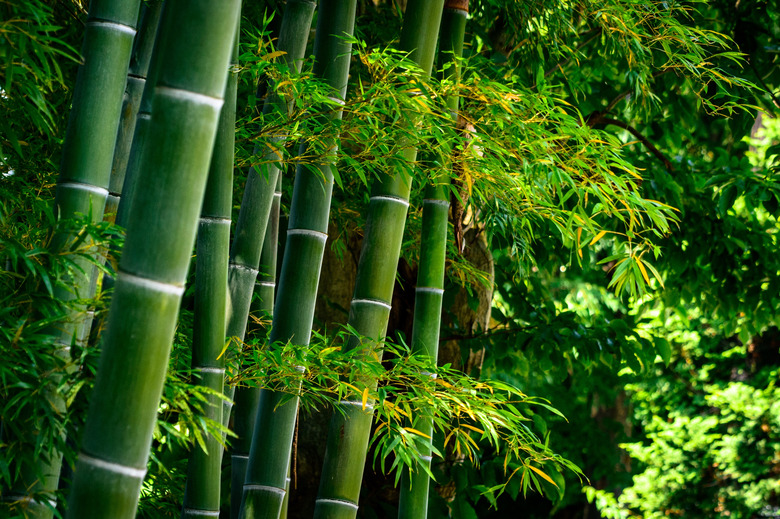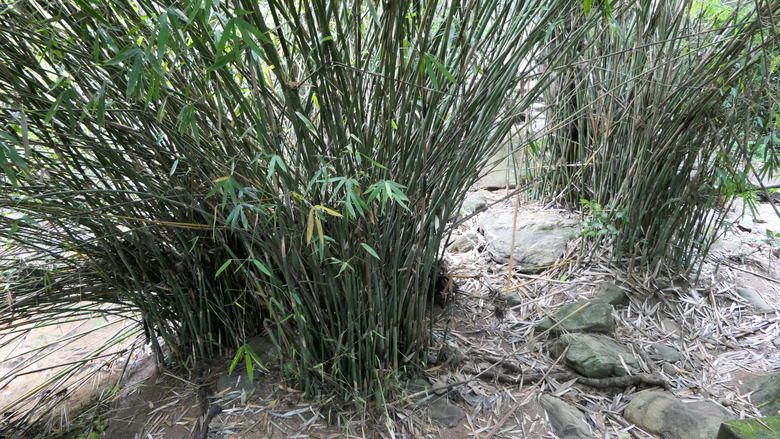How To Care For Sick Bamboo Plants
While there are more than 45 genera and 1,200 bamboo species, all within the Bambusoideae sub-family (a member of the Poaceae family), most types share similar growth requirements and are susceptible to similar diseases and pests.
And just because bamboo is so strong that it is sometimes likened to steel—and it is also famously resilient—a bamboo can still succumb to pests and fungal diseases. Here's how to care for your bamboo plant if it's not thriving.
General Bamboo Plant Care
First off, to avoid a sick bamboo plant, provide it with the care it needs. A healthy plant can withstand the onslaught of many an intruder, whether pest or disease.
Here are the basics to ensure healthy bamboo:
- **Choose a location in full sun or part shade with moderately acidic and loamy soil.** Avoid heavy soils unless you add organic matter to improve aeration and drainage.
- **Mulch regularly to cover its roots and rhizomes.** Don't rake fallen leaves; rather, leave them in place to provide mulch.
- **Water liberally and frequently if your bamboo is newly planted.** Bamboos are thirsty plants, so twice-weekly watering is advised. In hot weather, however, it may need daily watering. Lack of water is a primary cause of bamboo growth problems.
- Fertilize about three months after planting or up to a year after planting if you have dug out rhizomes from a mother plant and transplanted them. Choose a well-balanced fertilizer, adding dolomite to neutralize the acid pH if necessary. If your bamboo is growing in a pot, use a high-dosage, water-soluble solution applied regularly, according to the product label.
Bamboo Diseases and Pests
Generally, bamboo has few problems, but some pests and diseases can target it. Rather than the stalk, first watch the leaves for signs of distress. For instance, if the leaves become yellow, are dropping prematurely or not growing back, it indicates either too much or too little sun, pests or a lack of fertilizer.
Possible Bamboo Diseases
**Root Rot:** Oh no! Yes, Armillaria root rot can attack your bamboo, especially if it's growing in a pot set inside a tray with the roots sitting in standing water. You can identify this fungus by the growth of small mushrooms at the base on the plant.
If affected by root rot, the bamboo will decline and the leaves will yellow, then turn brown, as the infection moves up the stalk. Once this disease is advanced, the bamboo will not recover, and you will have to dig it out and discard it.
Overwatering and soil with poor drainage are the primary causes of this disease, so monitor your bamboo carefully for standing water.
**Fungal Spots:** Poorly drained soil can also result in fungal spots that appear on the young shoots and stalks as brown markings, sometimes in a circular shape. Some bamboos display this spotting, and it doesn't necessarily harm the plant, but it can also cause decline or may be indicative of an insect problem.
Tip
Monitor your bamboo careful for standing water, as overwatering and soil with poor drainage are the primary causes of root rot.
Likely Bamboo Pests
**Bamboo Mites:** The primary pest that can inflict damage on a bamboo, the bamboo mite sucks fluids like chlorophyll from the undersides of leaves. Failure to control mites can result in a serious infestation and impact the bamboo's healthy growth.
While these are hard to spot, you'll notice the leaves developing pale spots and possibly become curled. Peer on the underside, where you'll see spider web-type formations and tiny bugs.
Infestations of bamboo mites can be exacerbated if you have applied an insecticide that has killed off its natural enemies. Instead, use insecticidal soap or oil.
**Aphids and Mealybugs:** In addition to mites, aphids and mealybugs can target bamboo. Aphids also suck the life juices from the leaves of infected bamboo and multiply as fast as mites. Fortunately, aphids are easy to spot and can be effectively removed with a blast of hose water.
Mealybugs also feed off the plant's sap and essential fluids, but they too are easy to see as they form cotton ball-like colonies on the stems below the leaves. If left untreated, the bamboo will become stunted and lose its vibrant color.
To manage aphids and mealybugs, watch for ants. Ants are attracted to the excretions of sap-sucking insects, so their presence is a good sign of an infestation. However, ants inhibit the bamboo's natural enemies, so it's important to control them. In addition, practice good garden hygiene by removing loose bark on which mealybugs can overwinter. You can also apply insecticidal soap.
References
- University of California IPM: How to Manage Pests – Bamboo
- University of Arizona Cooperative Extension, Yavapai County: Growing Bamboo
- University of Georgia Extension: Growing Bamboo in Georgia
- American Bamboo Society: Bamboo Planting and Care
- Bambu Batu: Bamboo Pests: Identification and eradication
- Bamboo Plants HQ: 10 Bamboo Pests & Diseases You Want to Watch Out For

